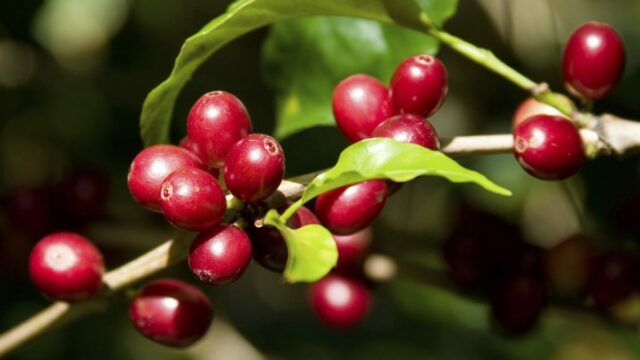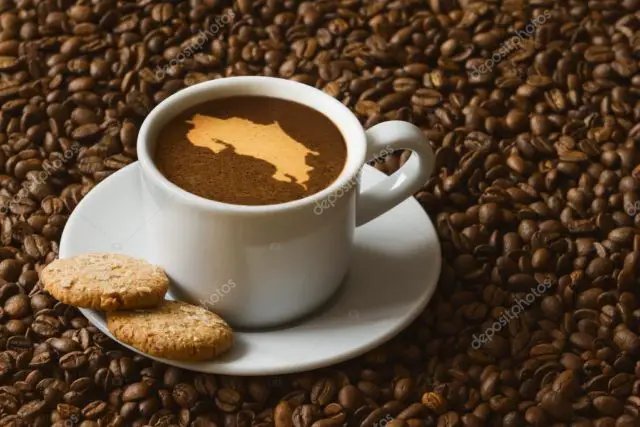Costa Rican specialty coffee continues to have its main market abroad, but it is gaining more and more space in the tastes and pockets of domestic consumers. This causes an evolution in the local market that is opening space to more coffee brands, more coffee shops and more demand for professionals specialized in this drink.
What is a specialty coffee?
It can be called gourmet coffee, fine coffee, or specialty coffee. When you think of this type of coffee, places like the Zona de los Santos or Naranjo probably come to mind, regions that have made this crop part of their identity. However, any place can give rise to a specialty coffee.
There are some coffees that, beforehand, it can be intuited that they will generate a good drink, but during the process variables such as growth, climate, terrain, harvest time, among others, influence, so each harvest will have, even in the same farm, different categories of coffee.
A specialty coffee is one whose characteristics surpass others, such as its flavor, sensory, olfactory and gustatory aspects. The quality must be optimal from planting to cup.

Evolution
“We have managed to make our consumer more educated and it has also happened to us with the producer (…). Today the producers, especially in Costa Rica, are scientists; one goes to some processing centers and they look like laboratories”, said Noelia Villalobos, executive director of the Association of Fine Coffees of Costa Rica.
Specialty coffee shops climb more steps to reach the ‘gourmet’ consumer
This increased interest has given rise to an evolution in the local market that involves different actors. New regions are gaining prominence in the specialty coffee scene. One of them is Pérez Zeledón, who has been among the finalists of the Cup of Excellence contest and this year reached third place, with the Los Toños farm. The Western Central Valley and the Los Santos Zone are the regions that stand out the most in this competition.
Pérez Zeledón is today the second canton in the country that produces the most coffee, only after Tarrazú. León Cortés, Naranjo and Coto Brus complete the top 5 of the most coffee growing cantons.
Most coffee growers in Costa Rica are small, with farms of a few hectares, and used to deliver their harvest to a larger mill that was in charge of processing the coffee and selling it.
According to Villalobos, about 10 years ago –coinciding with the start of the contest in Costa Rica– a boom began in micro-lots that produce small amounts of coffee but allow themselves to have a more specialized and artisanal process.
With them also appeared the micro-processing plants that not only produce, but also process and benefit their own coffee, which achieves higher qualities and, therefore, a higher sale price. They have also opted for innovations in the processes.
When a farm goes from just producing to processing and marketing, the number of members of people involved in the business also expands and the roles are specialized.
“For about four years the specialty market has been growing a lot. People are starting to know where the coffee comes from, who the producer is, etc., and they are getting more involved,” said Johnny Alvarado, a member of the family that owns the Los Toños farm.
Other producers such as Ricardo Calderón, from the Don Cayito farm, and Matías Monge, from the El Cedro farm – Hacienda San Isidro Labrador, also perceive a greater internal demand for fine coffees. These two farms located in Dota ranked first and second in the Cup of Excellence 2022.

All this change has generated that the consumer finds more brands of fine coffees. Don Cayito sells its coffee under the brand that bears the same name, while the El Cedro farm sells its under the Pata Larga brand. Los Toños, for its part, does so through third parties, with the Orígenes and Hellmund brands.
Specialty coffee shops are also growing. Don Cayito, for example, has taken a step to the next level and two years ago opened its own place offering coffee from its farm. The strength of specialty coffee shops is based on the fact that they have different methods of infusion or preparation and closer contact with producers.
“If they can’t tell you the characteristics and where the coffee you’re drinking comes from, the coffee shop isn’t specialty,” Minor Alfaro, founder and barista at Kaffa Café in Coronado, told in a recent interview.
Alfaro is the creator of the vandola filtering method, the only method devised in Costa Rica. Inspired by the chorreador, the vandola consists of a jar with a handle, made with clay in a pre-Columbian style.
The last link in the chain, which is in direct contact with the consumer in coffee shops, are the baristas. For Adrey Salazar, secretary of the Barista Association of Costa Rica, there is an “awakening” for specialty coffee that is a consequence of a greater culture for this drink.
“We baristas have focused on teaching people what specialty coffee is, how to drink it, how to taste it,” said the representative, who is a barista at the Franco and Simple coffee shops.
Salazar showed that a greater specialization of the barista is also being generated in the country and a certain competition between coffee shops to offer the best coffee and have the best baristas.
The expansion of cafeterias is causing barista to be an occupation that is demanding more professionals in the country. The Association supports people who want to learn and organizes competitions, but does not issue certificates, although there are other entities in the country that do offer barista degrees.
From this boom, the Coffee Institute of Costa Rica (Icafé) developed the Decafeencafe.com platform, in which people can search for coffee shops and coffee brands, with the ultimate goal of promoting the consumption of the national product.
Costa Rica is the second producing country with the highest consumption per capita, after Brazil. Each Costa Rican consumes, on average, 4.15 kg of coffee annually. However, this figure falls short of the consumption of non-producing countries. Finland is the largest consumer in the world, with about 12 kg per inhabitant per year.
From Costa Rica to the world
The main business of specialty coffee, and of the sector in general, continues to be exports. The United States is the largest market for Tico coffee, since almost 43% of the national production traveled to that country last year. Belgium and Germany are the next destinations.

However, when it comes to specialty coffee, Asia turns out to be the market that is willing to give the most money. About 80% of the Cup of Excellence coffee that participates in the global electronic auction goes to that continent.
Countries like Japan, China or South Korea bet significant sums to get Tico coffee. This year, for example, Don Cayito coffee fetched $140 per pound from a Chinese company. A second batch was sold for $138 to a Korean company. “The Asian market is growing. They appreciate quality things”, commented the director of the Association.
The United Arab Emirates and the Nordic countries are other markets with high purchasing power that are increasingly falling in love with Costa Rican gourmet coffee.
The associations and producers consulted are optimistic and foresee sustained growth in the coming years for Tico specialty coffee, which is increasingly conquering more palates abroad but also in its own land.

For those who have experienced shifts in consciousness and know that more peace, joy, and love awaits in a better living environment. A bold shared vision. A living community and hub for innovation. A sustainable ecosystem for living and working. A model for the new future.
